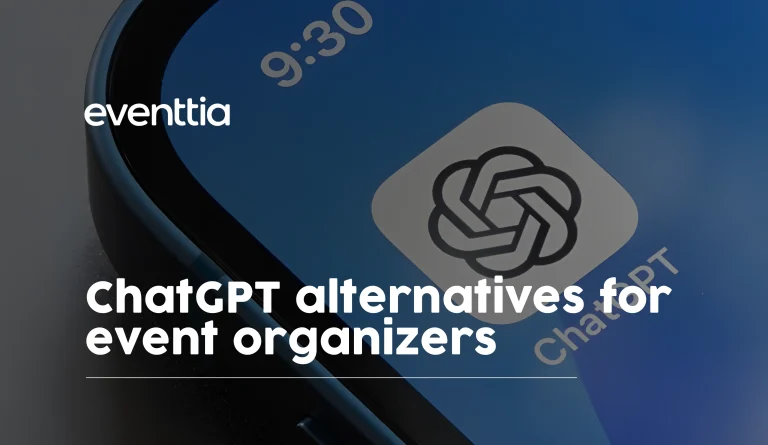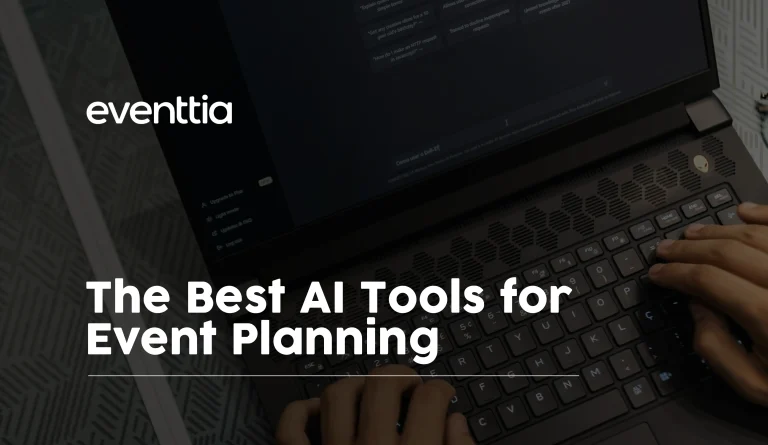One of the biggest challenges when running an event is the planning stage: even organizing a fairly small and seemingly simple event can be a very challenging task with all the different details to consider and adjust.
If this is your first time planning an event, chances are, knowing where to get started can be daunting, but fear not as you’ve come to the right place.
In this ultimate event planning guide, we will discuss all you need to know about planning, organizing, and executing an event in this step-by-step guide. By following these steps, you’ll be able to consistently organize a successful event and attract more attendees in no time.
Without further ado, let us begin:
Step 1: Define SMART Goals
The first step you should do when planning your event is to spend some time really thinking about the reason and objectives for running this event.
Without clearly figuring out the objectives of your event, you won’t be able to figure out the right direction for your event.
Knowing your objectives might even dictate what types of events you should organize to maximize the chance of achieving these goals.
First, decide on a primary goal for the event. This can vary from anything including:
- To support a new product launch
- Increase brand awareness
- Sell more of your products/services during the event
- Educating your target audience about something
And so on. While it’s possible to have a combination of different goals as your primary goal, it’s best to focus on just one or two goals.
Next, plan more specific SMART goals derived from this primary goal. Remember, SMART stands for:
- Specific: make your goals as narrow and specific as possible.
- Measurable: you should be able to assign KPIs and metrics to track your progress in achieving this goal
- Attainable: that is, realistic enough to achieve within the desired timeframe. Important to maintain your team’s morale.
- Relevant: pretty self-explanatory, your event’s objective should align well with your organization’s long-term goal.
- Time-bound: we should be able to set a realistic but ambitious timeline for each goal to maintain motivation.
Here are some SMART goals examples for event planning:
- Receive 100 purchases for products promoted in the event
- Get 1000 more social media mentions during the event
- Get 1000 more Instagram followers before, during, and a week after the event
Step 2: Create a Preliminary Plan
Based on the objectives you’ve discussed above, we can start creating a draft for the event’s plan.
This preliminary plan should include key details while considering how we will achieve the planned goals discussed in the previous step. Keep in mind that this won’t necessarily need to be a fixed thing, and you can always make changes along the way.
However, you should include preliminary details like:
- Time frame: if you have a planned date (and are able to secure the venue for this date), then you can put it in your draft. However, you can simply put a rough time frame for the event (i.e. next March)
- Location: whether it’s an online/virtual or an offline event. If it’s an offline event, also decide whether the event will be local or will be hosted in different locations. Create a shortlist of venues and cities/countries for your event.
- Details of attendees: the number of attendees for your event will also determine the size of the venue you need. If this is going to be a 1,000-person event, then you’ll need a venue that can accommodate this. Also, you should figure out other details of your target attendees: demographic data, location, and so on.
- Type of event: based on your planned objectives, you can decide on the most suitable type of event to achieve this objective. There are obviously various different types of events to choose from, including but not limited to:
- Conferences
- Workshops/classes
- Trade shows and expos
- Competitions
- Festivals
- Speaker session
Based on this preliminary plan, you should also estimate the required budget and create an internal proposal to secure buy-in from your organization’s leadership (if any). You can then start planning for the target sponsors, event speakers, and exhibitors.
Step 3: Deciding Your Venue and Date
Before planning your event, and even before creating your team, it’s best to decide on a venue and date for your event.
Start researching venue options as early as possible: deciding on the best date/time when the venue is also available is very important, and can be challenging.
Don’t forget that there are various other variables that depend on the venue like accommodations, catering, layout, travel arrangement for attendees, and so forth.
This is why the earlier you can decide on a venue and date, the better so you can plan on other elements of the event without having to worry about this.
You might also want to consider seasonal factors in your location like travel costs, and popular venues might be more expensive to book at certain months, depending on your location.
Research your options carefully, and don’t be afraid to ask as many questions as possible when talking with venue representatives.
Step 4: Establish Your Event Team
If it’s a fairly small and simple event and you’re planning to organize the event by yourself (or with the help of one or two people), then you can skip this step.
However, if you are planning a large event, most likely you’re going to need a properly organized team to help you plan, organize, and execute the event production.
The secret to building a successful team is assigning the right roles and responsibilities to the right people, and it’s best to designate roles as early as possible. You should begin by appointing a project/event manager (if it’s not yourself) who will be responsible for overseeing the whole event project.
Also, if your team is fairly small, then it’s okay to assign multiple roles to one person (although it’s best to limit one person to not more than two roles).
Here are some important roles to consider in an event team:
- Event Manager: supervises the whole team and is ultimately responsible for the overall execution of the event. Makes top-level decisions including managing the event budget.
- Marketing coordinator: responsible for promotion and communication strategy and the execution of event promotions before, during, and after the event.
- Designer: crucial for all your event’s visual components from stage design, website, emails, and social media assets, among others.
- On-site lead coordinator: the go-to person for anything that happens on the day of the event at the venue, the main contact for the venue for the vendors, exhibitors, sponsors, etc.
- Scheduling: coordinates meetings before and at the event, work with speakers/exhibitors, and make sure the event’s schedule is up to date and well-maintained.
- Registration: work with event ticketing software providers, produce and manage tickets, and make sure the whole registration process is running smoothly.
- Sponsorship: sell sponsorship opportunities and maintain relationships with secured sponsors.
- Event technologists: responsible for the entire event and marketing technology stack to make sure you are collecting data at every stage of your event and ensuring this data is synced.
Step 5: Develop Your Event Branding
It’s crucial to have a strong personality in your branding to help your event stay top-of-mind for your target attendees. A strong brand can also help you in steering the direction of your event.
In general, your event’s brand should align with your organization’s brand, but it should also have a strong brand on its own.
You should consider:
- The event name: very important since it’s going to be the first thing your attendees will see.
- Logo, brand colors, and other design elements: should align well with your business’s design elements
- On-site decoration, signage, email signature: smaller visual details of your event and promotional materials should support your overall event branding
Step 6: Detailing Your Plan
Pretty self-explanatory, in this step you should plan all the details of your event program.
As with your venue, it’s best to decide on all the details as early as possible. However, you don’t really need to have all the schedules finalized before you can start promoting the event, and you can always make changes even after tickets have been purchased.
Yet, it’s important to at least have a detailed event framework as early as possible.
Step 7: Confirming Speakers, Exhibitors, and Sponsors
This step is about securing the external parties that are going to be crucial for your event’s success.
Build a list of sponsors and exhibitors you want to participate in your event, and conduct thorough research to understand whether they are a great fit for your event.
For securing sponsors, especially figure out how they would benefit from collaborating with your brand and/or participating in your event, for example:
- Mutual target audience
- Complimentary products/services
- They are recently launching a new product and in need of a promotion
Take the time to create comprehensive sponsorship packages before reaching out to your sponsors.
Step 8: Secure Your Technology Stack
Nowadays, it’s virtually impossible to organize an event without the help of technology. People will expect online registration, and you’ll need a technology solution for this, and you should also consider technologies that might help in assisting your team’s productivity.
You should consider:
- Online registration: event management platforms like Eventtia make it easier for you to offer online ticketing and registration, and manage this online registration.
- Productivity technology: you can use tools like Trello, Slack, and Zoom to assist your team’s productivity
- Event app: if it’s an annual app, you may want to consider creating an event app to enhance the attendee experience and streamline your promotions/communications.
- Live streaming: it’s quite normal these days to live stream offline events, and many events are 100% virtual in nature, so you’ll need to consider the right live streaming equipment and platform.
Step 9: Develop a Promotion Plan
The last step here is to create a comprehensive marketing plan for your event.
In this step, you should put into detail the marketing tactics you’ll use to attract more attendees, and the key here is to have a thorough understanding of your target attendees.
Evaluate the available marketing channels, and check which ones are more likely to help you reach your target audience.
Conclusion
By following the steps we’ve discussed above, you are ready to start planning and organizing your own event.
As discussed, when planning an event, the earlier, the better: secure your venue and event date as early as possible so you can move forward to secure the other details.
Also, create a system in place to help you evaluate the event after it’s executed by measuring the actual performance with your objective(s). You can, for example, conduct surveys to gain an understanding of your attendees’ experience during the event.
Discover how Eventtia helps world-leading brands digitize and scale their events
Learn moreShare



